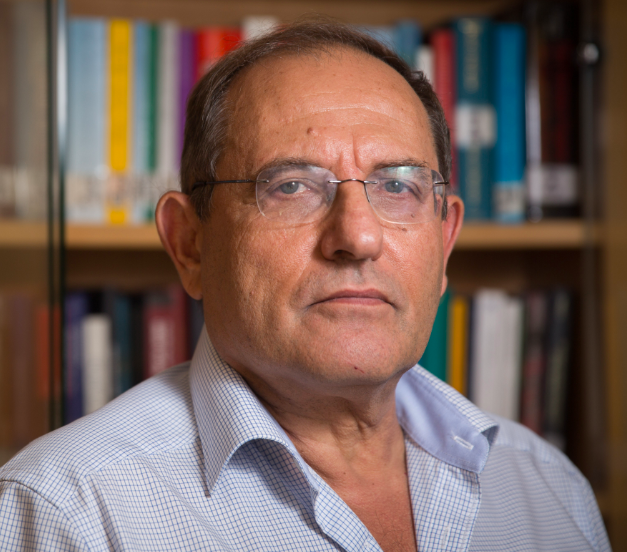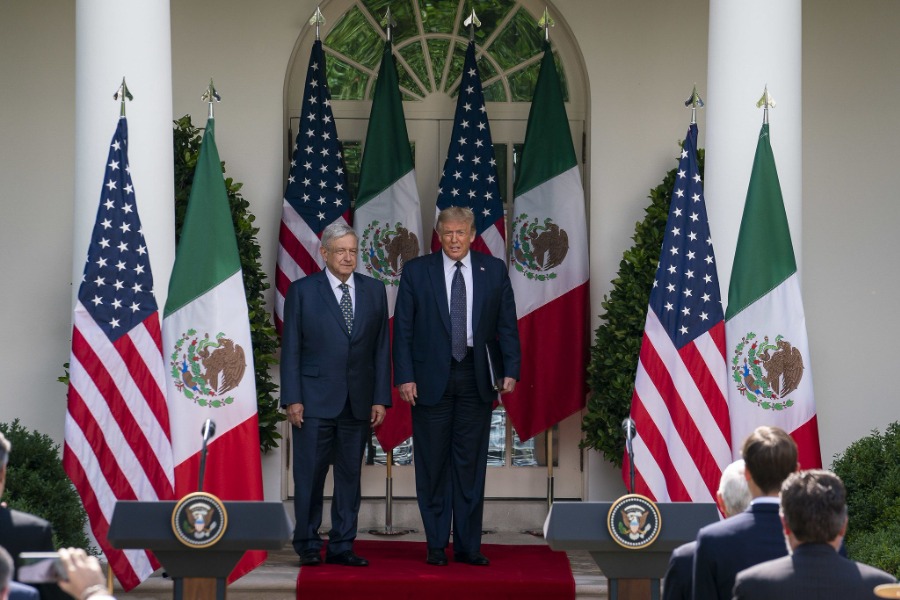‘Special Interrogations,’ Confessions and the Duma Arson Attack
An Israeli district court issued a lengthy decision last month related to the Duma arson attack, the July 31, 2015, fire-bombing of two Palestinian houses by two young Jewish settlers that burned alive an 18-month-old, fatally injured the baby’s parents, and badly wounded the family’s 4-year-old.
Published by The Lawfare Institute
in Cooperation With

An Israeli district court issued a lengthy decision last month related to the Duma arson attack, the July 31, 2015, fire-bombing of two Palestinian houses by two young Jewish settlers that burned alive an 18-month-old, fatally injured the baby’s parents, and badly wounded the family’s 4-year-old. The incident is one of the most notorious terror attacks committed in recent years by Jewish extremists against Palestinian civilians. Several Jewish suspects were arrested and interrogated by the Israel Security Agency (ISA) and police. Eventually, 21-year-old Amiram Ben Uliel and a 17-year-old minor whose name was not disclosed were charged with murder, attempted murder, arson and conspiring to commit a racist crime. They were also charged of membership in a terror organization and for other offenses they committed before the Duma attack.
During the trial, both defendants submitted a motion to dismiss the confessions they gave at the initial stage of their interrogation, which fell in the 21-day period following their arrest, during which, pursuant to provisions of criminal procedure law applicable to security offenses, they were barred from meeting with lawyers. On June 19, the Lod District Court issued a long and reasoned decision that ruled inadmissible confessions that were given during interrogations in which the security forces used “special
 interrogation measures” and in some of the “regular” interrogations that followed. It did find admissible, however, confessions made by the minor defendant to undercover police agents pretending to be his fellow inmates and the adult defendant’s confession in regular interrogations that took place 36 hours after the “special” interrogation. Unfortunately, the approach the court took was highly problematic, especially in light of the unlawful interrogation practices revealed by the facts of the case.
interrogation measures” and in some of the “regular” interrogations that followed. It did find admissible, however, confessions made by the minor defendant to undercover police agents pretending to be his fellow inmates and the adult defendant’s confession in regular interrogations that took place 36 hours after the “special” interrogation. Unfortunately, the approach the court took was highly problematic, especially in light of the unlawful interrogation practices revealed by the facts of the case.
The Use of ‘Necessity Interrogations’
Israeli courts have long addressed the legality of “special interrogation methods”: a cluster of rough tactics that includes subjecting the interrogee to painful stress positions, tight shackling and sleep deprivation. In a landmark 1999 decision the Supreme Court held that the ISA does not have legal authority to apply “special interrogation methods” that violate human dignity. It left open the possibility, however, that under extreme (“ticking bomb”) circumstances, interrogators who resorted to such measures would be able to later invoke the criminal law defense of necessity. In the 2017 Abu Ghosh case, the court upheld the 1999 attorney general’s guidelines articulating the circumstances under which the necessity defense would be available and confirmed the requirement stipulated by those guidelines that the interrogation methods applied can under no circumstances amount to torture, as defined in international law.
In a previous Lawfare post, one of us (Shany) criticized as lax the standards employed by the Israel Security Agency to designate situations as permitting resort to “necessity interrogations.” We think the standards applied by the ISA improperly cover risks whose anticipated realization is uncertain and distant in time. Such standards fall short of those identified by President Aharon Barak when he described the "ticking bomb" scenario in the 1999 Supreme Court judgment. True, according to the judgment, the criminal-law notion of “immediate necessity” pertains to the urgency of the required preventive action and not to the actual time in which the anticipated harm is expected to occur. But President Barak insisted on a showing of "certainty of the realization of the danger and the impossibility of preventing its realization in any other way.”
In the Duma case, the state prosecutor's office replaced the term cited in the 1999 judgment as the benchmark for evaluating the availability of the necessity defense, “ticking bomb,” with “ticking infrastructure.” This is not a semantic change. Rather, it expresses the position that information likely to significantly curtail the activities of a terrorist organization may establish a claim of necessity that could allow an extreme violation of the rights of an interrogee, without any need to point to a specific terrorist attack expected to be thwarted by the procured information. Such a position has far-reaching consequences and seriously deviates from the terms of the 1999 judgment; it facilitates violations of the international prohibition against torture and cruel, inhuman, and degrading treatment or punishment. We are therefore concerned with not only the gradual transformation in Israeli law and practice of the necessity defense from an ex post facto criminal defense to an a priori system of authorization (in the Duma case, according to press reports, directly from the attorney- general) but also with the gradual loosening of the immediacy and certainty conditions underlying the necessity defense. Notably, the Supreme Court refrained from addressing in its 1999 judgment the relationship between the necessity defense and the test of reasonableness (Section 34.16 of the Penal Law). In our view, the expansive interpretation of necessity requires such an examination, and it is difficult to see how the test is satisfied given the harsh nature of the interrogation measures in question.
The district court decision also fuels doubts as to whether even the weak standards of necessity proclaimed by the state were respected. The defendants in the Duma case—one of whom was a minor at the time—testified that they were subjected to interrogation measures causing them intense pain. The head of the ISA interrogation team did not contradict this; to the contrary, he testified that the measures employed were “painful and perhaps even very painful” (Paragraph 186 of the district court decision). The court also held that the special measures severely violated the defendants' fundamental right to preserve the integrity of their body and soul. It should be noted that the intentional infliction of severe pain and suffering is prohibited by all definitions of torture under Israeli and international law, and that resorting to torture was explicitly prohibited in the attorney general’s 1999 guidelines (which, as we noted, were affirmed by Supreme Court in the 2017 Abu Gosh case).
The frequency with which special interrogation measures were resorted to, and their apparent link to attempts by interrogators to extract from the defendants a confession regarding their involvement in the Duma murders, raise concerns that the “special interrogation measures” were primarily intended to support the criminal case against the defendant. Yet under Israeli law, the necessity defense is available only to those acting to thwart an immediate and concrete grave risk (i.e., only to prevent future harm). The court refrained from determining whether the conditions for application of the necessity defense by ISA interrogators had been satisfied (Paragraph 156 of the district court decision), though it accepted the position that the main purpose of the ISA interrogation was preventive. It seems to us that such a general statement is insufficient to show that each instance of resorting to special interrogation measures met the legal conditions of the necessity defense as set out in Israeli criminal law.
Ultimately, however, the main significance of the district court’s decision is found not in relation to the legality of the interrogation measures but in its treatment of the admissibility of the confessions given during the interrogations. The decision attempts to adequately protect the procedural rights of the defendant in this regard but, to our minds, fails. Consequently, it might facilitate the continued use of unlawful interrogation measures.
In the first 21 days following their arrest (during which meeting with their attorneys was banned pursuant to provision in criminal procedure law), the defendants were subjected to intensive ISA interrogations intertwined with police interrogations—i.e., to a mixture of preventive and criminal interrogations—and to several “necessity interrogations” and subsequent questioning in which no special measures were used. The mix between interrogations involving measures that severely violate the rights of the accused and subsequent questioning involving ordinary techniques raises the question of the extent to which the violation of rights in one type of interrogation impacts the admissibility of confessions made during the other type of questioning.
In the case of the adult defendant (Ben Uliel), the court held that the confessions given during his “necessity interrogations” were inadmissible per se, without there being a need for the defense to show that the measures applied negated his free will. While we accept that there should be an irrefutable presumption that interrogation measures calculated to cause pain and suffering negate free will, we think the court should have supported its conclusion through references to normative, motivational, educational and symbolic considerations. Notably, the Supreme Court held in a previous case that such considerations cannot in themselves render evidence freely given as inadmissible but that they can be a desirable side effect in some cases. If we are right, then one can ask whether the value of these considerations is not greatly diminished when confessions given in a follow-up interrogation, dovetailing a “necessity interrogation,” are found admissible. Since the adult defendant initially kept silent during his questioning and only provided statements after being subject to “special interrogation measures,” It can reasonably be assumed that without the inadmissible confessions given during the “necessity interrogation’,” the subsequent confessions would not have been offered as well. Yet the court’s willingness to accept and rely on some of the later confessions undermines the normative, educational and symbolic logic of disqualifying the first set of confessions. The message to investigators seeking to obtain incriminating statements might thus be that they should resort to unlawful interrogation measures since there is a reasonable probability that afterward they will be able to obtain admissible confessions facilitated by the inadmissible ones.
In view of this, we believe there is merit in taking the approach that in the event of an interrogation involving measures that are tantamount or come very close to torture, any subsequent confession must be inadmissible. This is not to advocate a sweeping rule of disqualification for all fruits of the poisoned tree. (And we would note that Israeli law does not follow the U.S. doctrine on fruits of the poisoned tree.) Forensic evidence and other investigative acts based on information obtained in the unlawful interrogations may still have some probative value in court. It is only confessions themselves that we propose to designate as totally inadmissible.
Even if our approach is rejected, we believe that certain procedural safeguards should still be resorted to with a view toward reducing the incentive for interrogators to use improper interrogation methods, reducing the normative harm caused by such methods and reducing the risk of wrongful convictions. Clearly, one of the dangers of resorting to “special” measures is that those being questioned might give false confessions to relieve themselves from the pressures of interrogation. The district court decision demonstrates this concern: The record of interrogation cited by the court indicates that the minor defendant expressed his willingness to confess anything that would be requested of him in order to stop the “necessity interrogation” to which he was subject (Paragraph 567 of the district court decision)
The two principal safeguard measures we support are full audio-visual documentation of ISA interrogations, which would enable courts to get a good impression of what actually took place in the interrogation room and the effects on any confession given; and a sharp separation between the preventive and criminal phases of the investigation. The two measures need to be applied cumulatively.
It is interesting that the district court made some use of these two safeguard measures: It found admissible confessions given in regular interrogations following “necessity interrogations” that were filmed and showed the adult defendant behaving in a composed manner and in full control of his actions; yet the court found inadmissible confessions rendered in subsequent interrogations that were not audio-visually documented. Furthermore, in assessing the impact of “necessity interrogations” on subsequent questioning, the court considered the level of distinction between the two sets of interrogations: changes in the identity of the interrogators, the time gaps between the interrogations and the different purposes of the investigation. In our opinion, these safeguard measures must be turned into an absolute condition that determines the admissibility of confessions obtained in investigations involving, at any stage, improper interrogation methods.
Free will is critical in these matters. Having sufficiently free will on whose existence the admissibility of statements by the interrogee depends is an intermediate mental state located on a spectrum between absolute free will and coercion. Absolute free will exists, for example, when the defendant makes a truthful confession out of genuine remorse or self-interest unrelated to the interrogation, whereas coercion entirely negates free will. Situating a person’s precise state of mind on this continuum is difficult even for those viewing the entire investigation, had it been had it been visually and audio-documented. In particular, it is difficult to know from the outside what were the continuing effects of “special interrogation measures” on a person’s feelings of fear; apprehension; loss of confidence; and cognitive, emotional and voluntary capacities. It is also not clear what the impact may be on the interrogee’s knowledge that a “necessity interrogation” may be reintroduced should he fail to satisfy his questioners or withdraw a confession given during a previous “necessity” session. The vast majority of people, including judges, have never experienced such a situation, and it is not easy to imagine it even after viewing the audio-visual record of an interrogation. Additional guarantees are therefore necessary.
To further minimize the harm caused by improper interrogation measures, we believe that a sharp distinction should be introduced between the first stage of the investigation—its preventive phase—and the subsequent criminal phase. To the extent that questions in the first phase of the investigation relate to offenses committed in the past, they must meet the test of clear relevance to the prevention of future offenses. Where possible, efforts to avoid direct reference to past crimes should be exhausted, so as to avoid all pressures for self-incrimination.
At the end of the preventive investigation, a different type of investigation, a criminal inquiry concentrating on the past and not the future, could begin. Such an investigation must be conducted in accordance with all the rules applicable to a police investigation, including the duty to caution the suspect about his rights and to allow him to consult an attorney. Moreover, because the suspect is not a blank slate, it is safe to assume that any inroads upon his free will in the first part of the investigation might carry over to the second part. Therefore, it is important to create a clear separation in the suspect's consciousness between the two stages and to remove fear of the possibility of being returned to the harsher preventive-investigation phase. This can be achieved by physically moving the suspect from an ISA facility to a police facility and by reading an official statement aloud to the suspect informing him that the preventive investigation has ended and that he will not be subjected to “necessity interrogation”; the suspect should be asked to confirm that he has heard and understood these points.
The Lod district court decision on the motion to suppress illustrates a real risk to the rights of the accused posed by the use of “special techniques” in certain ISA interrogations and the lack of clear procedural separation between the preventive and criminal phases of the investigation. Serious human rights violations may be committed against criminal defendants through the combination of a gradually expanding defense of necessity—approaching torture in its severity—and exceeding even the controversial terms of the “ticking bomb” situation, on the one hand, and the use of evidence indirectly procured as a result of “necessity interrogations” in criminal proceedings, on the other hand.






